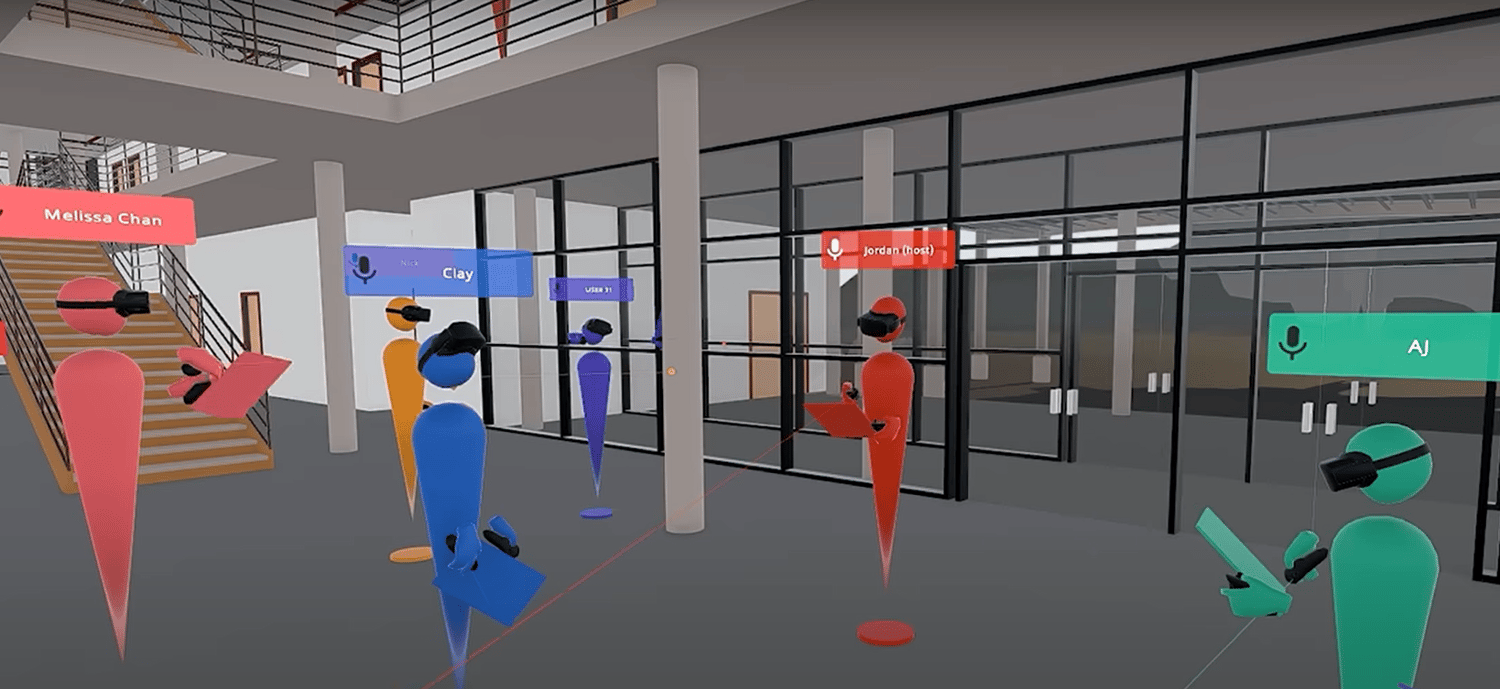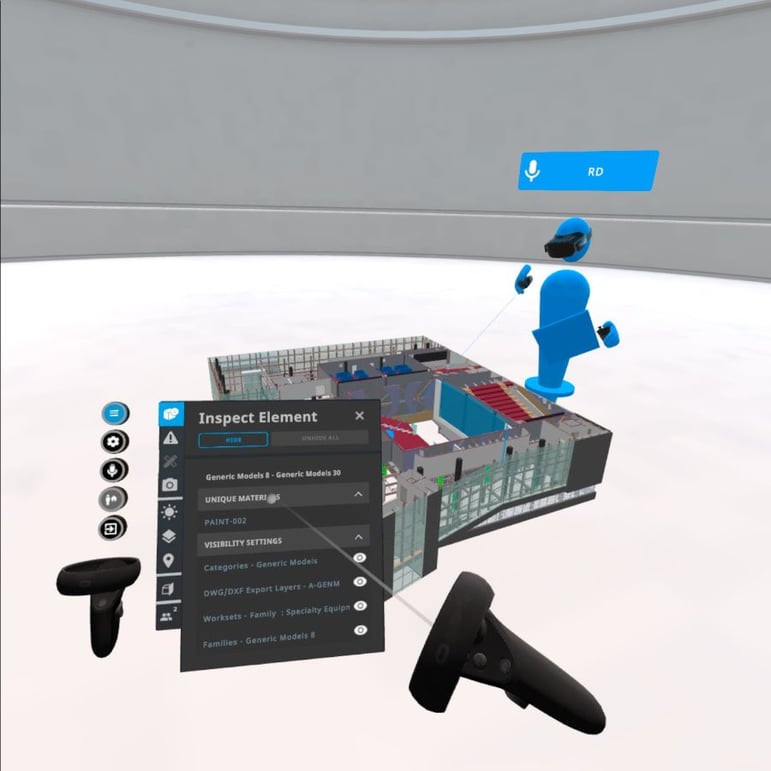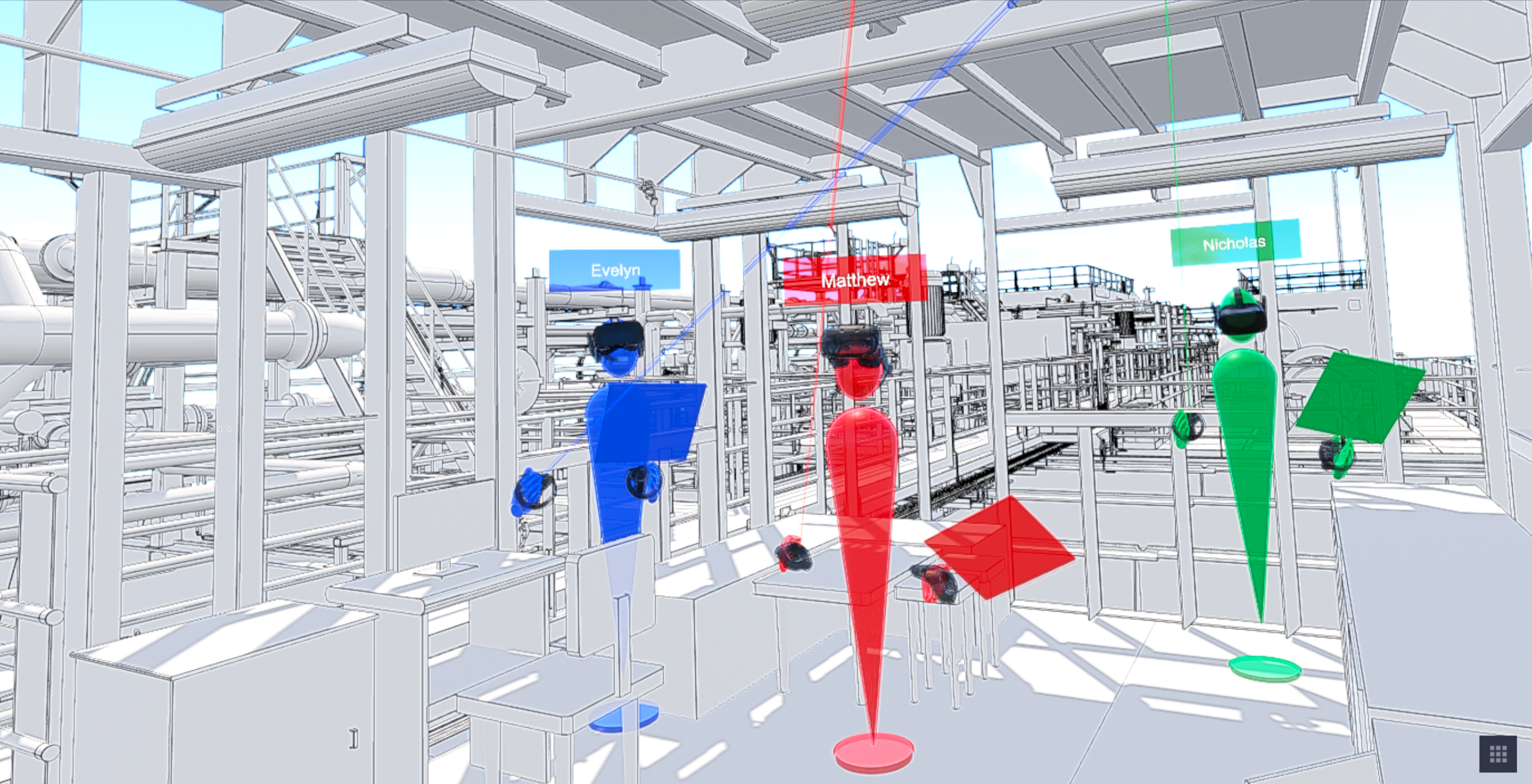The architecture, engineering, and construction (AEC) industry is faced with a new reality of work, with the trend of remote and hybrid work showing no end in sight. Still, facilitating genuine and meaningful interaction among peers and clients is paramount for establishing culture in today’s work environment.
Add to the fact that firms are no longer constrained by geographic proximity, and the need to coordinate globally becomes even clearer. Although screen sharing and other tools can do an admirable job in our current working conditions, these sorts of solutions have their limitations, – especially when applied to the world of designing a physical, three-dimensional space.
Virtual reality (VR) offers a more engaging and rich experience for AEC teams by immersing participants inside the design of the building, long before construction begins. Beyond offering a new way to meet with colleagues, clients and partners from anywhere in the world, VR provides a fresh perspective that conveys designs in a more powerful and easily digestible manner.

In this blog post, we’ve gathered three of the top ways teams in the industry are currently using VR for meetings. If you’re wondering why so many teams are already running VR meetings – or looking to convince stakeholders within your own organization to give it a shot – you’ve come to the right place.
1) Share 3D Models with Colleagues in VR
VR meetings represent the next generation of a conference call, with more empathy built in. The lifelike properties of VR meetings can be useful when sharing 3D models with colleagues and superiors. It’s a huge advantage to present your ideas to colleagues and supervisors when you can fully immerse them in the building you’re creating, instead of trying to communicate your idea in 2 dimensions.
Limitations of 2D Design Reviews
The use of 2D software will always have its place, but a flat screen attempting to convey a 3D space will always fall short in certain capacities – especially when trying to convey an idea for those less informed in the intricacies of design software.
Many clients and colleagues are not BIM specialists and may not be able to grasp the ins and outs of Revit or Navisworks. However, anyone can easily get a feel for a space once immersed and can spot issues quickly with little to no training.
First Time VR Users in Design Reviews and Coordination Meetings
Some may shy away from the concept of putting on a headset, but once they try it, people tend to be amazed at what is possible. The feeling of connection is deeper, the understanding of the design more profound; VR is something that must be experienced to be understood, but once it’s experienced, its benefits become obvious.
For those highly resistant or unable to access a headset, VR meetings can be joined via our desktop apps, allowing those who are unwilling or unable to immerse themselves to participate along with no additional hardware or software.

2) Run true-to-scale Coordination Meetings with Subcontractors
In addition to offering a place to meet with colleagues, VR also works great for coordinating with subcontractors.
VR makes the iterative design process more tangible and collaborative. With Prospect, you can step into 3D models in a 1:1 scale to discover clashes alongside building teams, making it possible to catch errors early in the design process.
Being together with your subcontractors in VR makes it easier to understand the specific aspects of a project, such as ceiling height or door location. Even for the most seasoned BIM pros, VR offers a new perspective where design errors have nowhere to hide. Signage blocked by line of sight, accessibility issues, and maintenance access blockages stick out like a sore thumb once a user is immersed inside the BIM model.
Today, the communication chain with subcontractors can drag out design processes and lead to unnecessary rework. But with VR, it’s possible to cut out the time-consuming back-and-forth by stepping into the model before breaking ground.

3) Obtain Client Buy-In with Immersive VR presentations
VR meetings are also a great way to obtain client buy-in for projects. Projects move faster when the client can get a real feel for the space and provide signoff to move to the next stage while being assured that issues are resolved quickly.
It is far easier to coordinate when everyone is sharing the same space and being presented with a design that is naturally and easily digestible.
Options in VR Reviews
In addition, tools within our program allow for optionality to be presented with the click of a button for clients. Does the client want hardwood or brushed concrete floors? Open concept or segmented spaces?
A-B testing options with a sense of space are just a click away and can be altered in real time to create a dynamic experience and bring about consensus; visibility layers within Prospect are a great way to test this workflow.
Faster Approvals
For some clients, a 2D plan might be totally confusing. They might not even be able to tell what’s up and down or left and right. The same can be said of looking at a 3D model on a 2D screen – this might be even more baffling for certain clients. On the other hand, having all interested parties share the same space and view the same vision can drive consensus faster and leave no room for error or interpretation.
Increasingly, VR tools are becoming the norm within our industry, as more powerful, easier to use, and more affordable VR equipment continues to roll out. AEC professionals are finding that VR can offer an experience that provides richer connection to your clients and colleagues, with technologies like VR motion capture and native audio enabling the expression of body language cues with hand and head gestures. Overall, VR is a tool that uses advanced technology to make interactions feel natural and realistic – despite great geographic distances.
Interested in trying VR meetings for any of these applications, or others? Start your 14-day free trial for Prospect by IrisVR today.
.png?width=212&name=Prospect%20by%20IrisVR%20Black%20(1).png)
